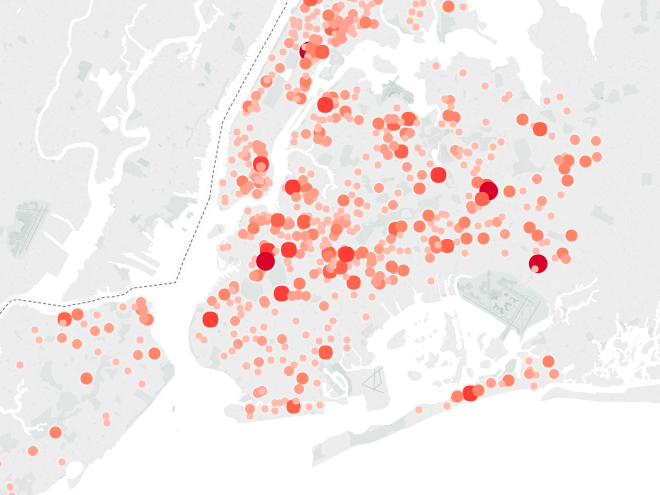Flies, Roaches and Rodents: Brooklyn School Cafeterias Rack Up Critical Health Violations


Mice and roaches in the kitchen. Students sickened by school lunches. With data obtained from the New York City Health Department, CUNY’s NY City News Service has published the shocking results of their investigation of health violations in New York City schools.
Reviewing health inspection data from 2017, it’s clear that Kings County has trouble with its school cafeterias, racking up 1,785 violations—over 400 more than the next borough. There’s even an interactive map of the schools and their violations.
Violations are broken down into three categories: administrative, general and critical. It’s the critical violations, like mice and roaches, or unsafe food temperatures, that have the most potential to harm students. Six Brooklyn schools racked up 5 critical violations in 2017, while the John Jay/Millenium School in Park Slope reached a staggering 7 critical violations last year.
| School | Neighborhood | Violations |
| PS/IS 30 | Bay Ridge | Roaches, Handwashing Facilities, Food Protection, Food Below 140°, Roaches |
| PS 249 | Flatbush-Ditmas Park | Food Above 41°, Mice, Rats, Mice, Roaches |
| Brooklyn Collegiate | Brownsville | Inadequate Thermometer, Mice, Roaches, Flying Insects, Food Protection |
| PS 22 | Crown Heights | Mice, Flying Insects, Handwashing Facilities, Cleaning/Sanitizing Equipment, Flying Insects |
| PS 282 | Park Slope | Adulterated/Contaminated Food, Mice, Handwashing Facilities, Mice, Mice |
| PS 17/MS 577 | Williamsburg | Eating/Drinking, Cleaning/Sanitizing Equipment, Handwashing Facilities, Food Protection, Food Protection |
The John Jay/Millenium School was the worst of the lot, however, with 3 violations for mice in the food area spanning February to November, along with violations for the cleaning and sanitizing equipment, a lack of food serving utensils, inadequate handwashing facilities and unavailable dishwashing facilities.
“It doesn’t taste good and it doesn’t look good,” student Heaven Santiago, told NY City News Service of the food at John Jay. “If the intention is to create food for us to be healthy, it’s been skewed. It’s highly unhealthy and unsanitary.”
While students are allowed off campus to purchase lunch, budgetary restraints in many families force students to go hungry during the day. “I have to just push myself to focus,” said Santiago, a 16-year old junior. “At the end, I’m still coming home to dinner. I just have to deal with it day by day.”
A law passed by Governor Cuomo made it mandatory for schools to post their health inspection records online, and if you’re curious about how your child’s school fares, you can search here.
But even schools without long lists of violations can put children at risk. In March, a nurse at P.S. 132 in Williamsburg reported that 5 second-graders fell sick after eating cafeteria food, the article states, but school officials condemned her as “overzealous.” A few days later, a food inspector cited the school for dirty equipment and inadequate food protection—potential root causes of food-borne illness.
Fifteen Department of Health (DOH) inspectors are responsible for keeping more than 1.1 million students safe, inspecting 1,400 cafeterias, the report states—and the Department of Health admits this isn’t enough.
But short-staffing doesn’t stop there: Shaun D. Francois, President of Local 372, which represents cafeteria workers, told NY City New Service that the city hasn’t followed through on plans to hire 2,000 more cafeteria workers, a promise that came in response to the Department of Education’s decision to offer free lunch to all New York City students.
As good as those intentions might seem, this disturbing investigation shows that instead of helping students in need, school cafeterias are serving up something rotten instead.
Update (2/1/18): In an email response, representatives for the Department of Education wrote “All schools must provide students with safe, clean cafeterias and we ensure that they meet all federal and state requirements. Nothing is more important than the health and wellbeing of students and staff, and we work closely with the Department of Health to immediately investigate and address any violation. In 2017, approximately 98% of schools passed their inspections.”



